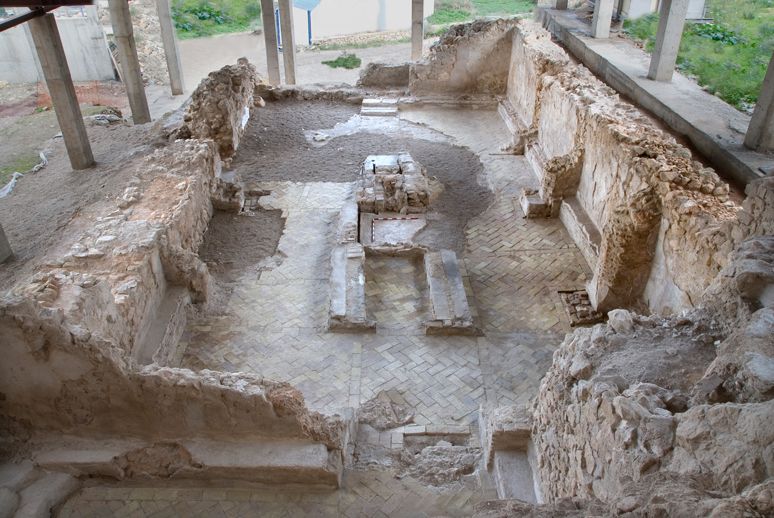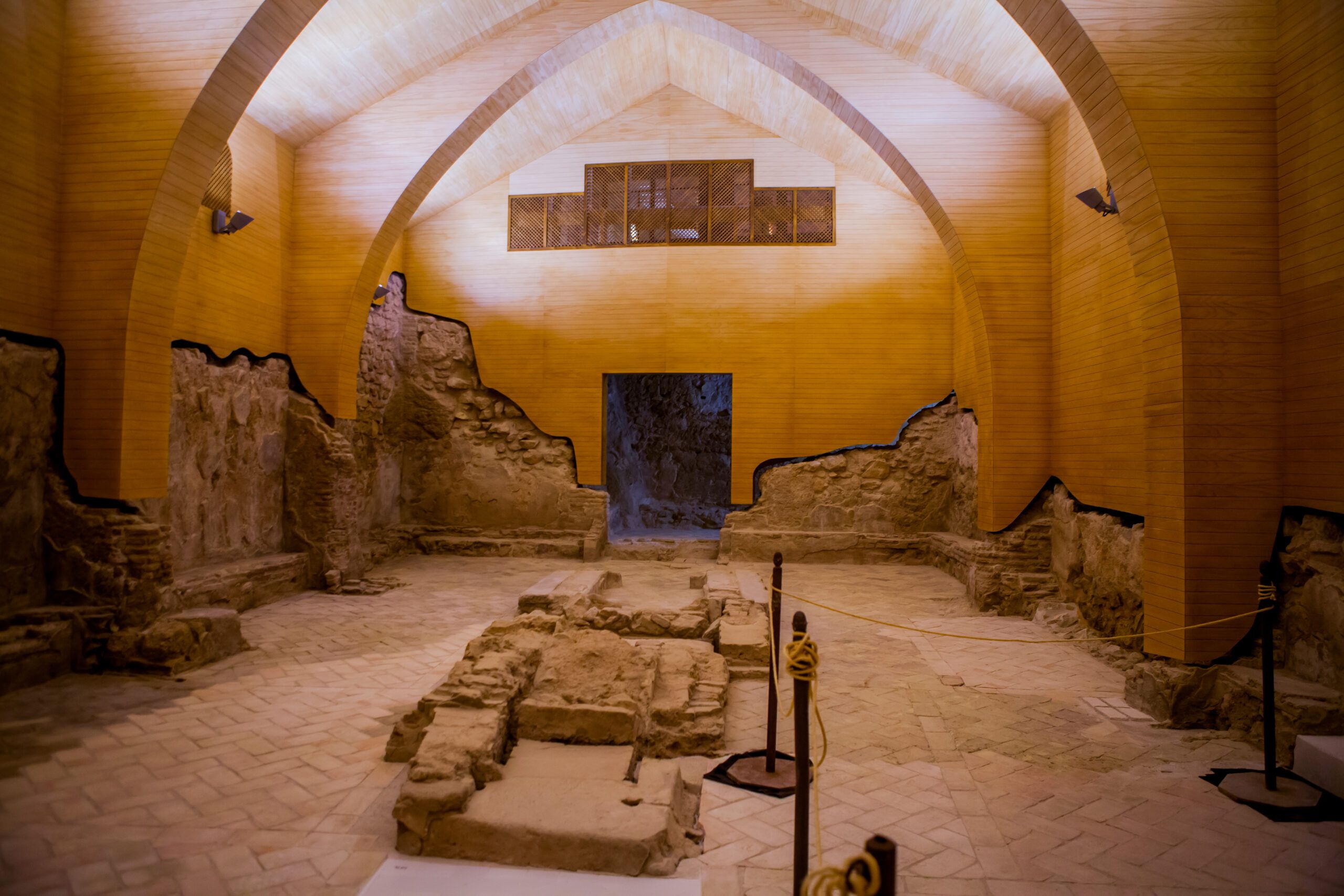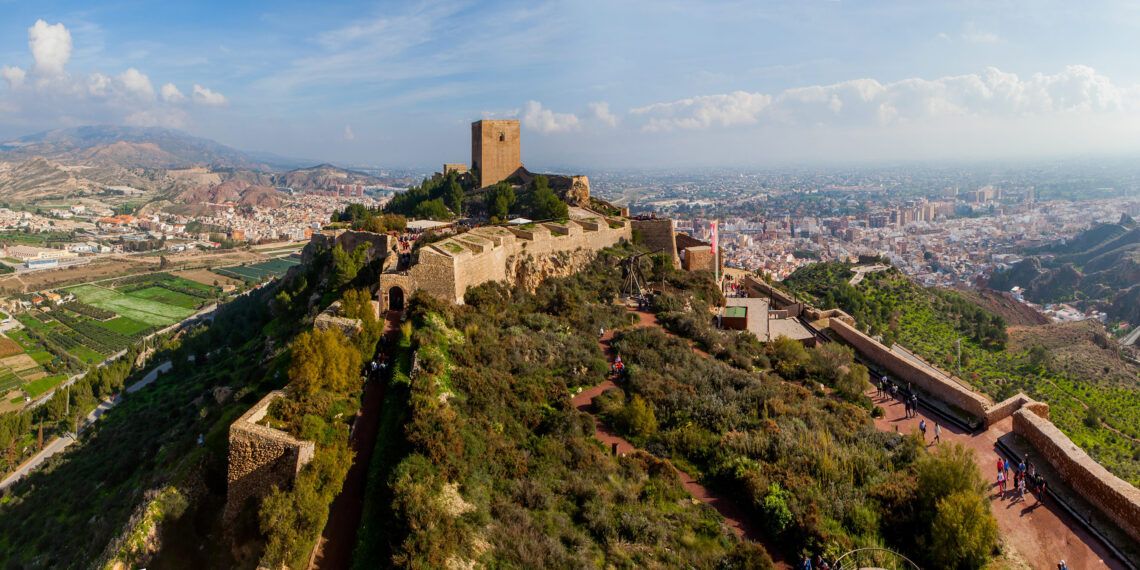High above the Guadalentín Valley, Lorca’s castle rises like a stone sentinel over the sun-drenched plains of Murcia. For centuries, its walls guarded a secret: beneath the fortress lay a medieval synagogue, untouched since the expulsion of 1492. When archaeologists uncovered it in 2003 during restoration works, they found something extraordinary—an intact prayer hall, never converted into a church, its bimá and hejal still in place.
More than 2,600 glass fragments were painstakingly reassembled into 27 ritual lamps, now displayed inside the Archaeological Park of the Castle of Lorca. Benches line the walls, the ark niche remains visible, and traces of a mikveh whisper of daily rituals that once animated this Sephardic community. Unlike other synagogues repurposed after 1492, Lorca’s remained buried and silent—a time capsule of Jewish life in the Kingdom of Murcia.
Historical records trace Lorca’s Jewish presence to the 13th century. The community thrived under Christian rule, engaging in trades like textiles, tanning, and finance. By the late 15th century, Lorca’s aljama was among the most significant in Murcia. The expulsion of 1492 ended that chapter, but the synagogue’s survival anchor Lorca’s identity as a city of layered cultures.
 From Discovery to Cultural Renaissance
From Discovery to Cultural Renaissance
The synagogue’s rediscovery sparked more than academic curiosity; it ignited a cultural movement. Each year, Lorca hosts Jewish Lorca, a festival that transforms heritage into experience. Ladino melodies echo through castle courtyards, sometimes fused with flamenco or electronic beats. Culinary workshops revive medieval Sephardic recipes, while storytellers animate the rhythms of Lorca’s Jewish quarter.
Now in its tenth edition, the festival has expanded to include contemporary art installations, DJ sessions sampling restored Jewish recordings, and educational talks on Sephardic history. Local schools and cultural associations participate, turning Lorca into a living classroom where memory meets creativity. A symbolic Janucá celebration inside the archaeological park—candles flickering against ancient stone—creates a dialogue between past and present.
 Traveler Insights
Traveler Insights
Location: Lorca lies 70 km from Murcia and 120 km from Alicante, accessible via the A-7 motorway and regional rail.
Best Time to Visit: Spring and autumn for mild weather—or during the Jewish Lorca festival for full immersion.
What to Do
Visit the Synagogue: Book a guided tour of the Archaeological Park to see the prayer hall and reconstructed lamps.
Join Jewish Lorca: Plan your trip around the festival for concerts, gastronomy, and storytelling.
Explore the Museum: The Museo Arqueológico Municipal displays artifacts from the Jewish quarter, including domestic ceramics and ritual objects.
Walk the Castle Walls: Combine heritage with panoramic views of the Guadalentín Valley.
Why Lorca Matters for Cultural Tourism
Lorca is not just a historical curiosity; it is part of the Jewish Heritage Network – Red de Juderías de España, Caminos de Sefarad, a national initiative connecting cities with Sephardic legacy. Through this network, Lorca offers marked routes, interpretive signage, and digital resources that make Jewish heritage accessible to travelers and professionals. The network also supports events like Jewish Lorca, ensuring that memory is not confined to museums but lived in the streets.
For travel professionals, Lorca represents a niche yet growing segment of cultural tourism. According to regional tourism data, heritage-based experiences in Murcia have seen a steady increase in demand, particularly among international visitors seeking authentic narratives. The combination of archaeological authenticity and experiential programming positions Lorca as a compelling destination for thematic itineraries focused on Jewish heritage.









